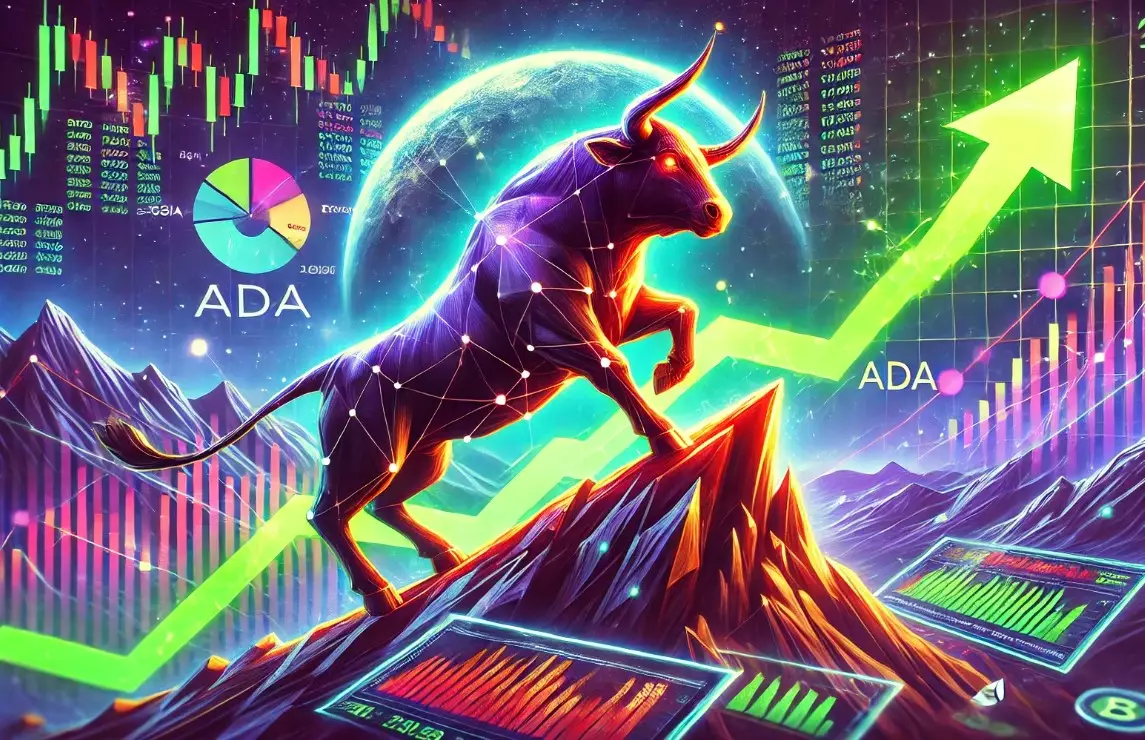In recent weeks, Cardano (ADA) has unfurled a remarkable performance trajectory, positioning itself as a focal point within the cryptocurrency landscape. With its market rank now sitting at ninth, ADA has shown an impressive 108% appreciation over a mere fortnight—a surge that reflects not just market sentiment but also strategic maneuvers by influential holders. Particularly noteworthy was the price rally that followed significant political events, such as Donald Trump’s recent presidential victory, which has injected renewed bullish enthusiasm into the market.
A key factor behind Cardano’s robust performance is the activity of so-called “whales” and institutional investors. Crypto analysts, like Ali Martinez, have noted a substantial increase in the volume of large transactions on the Cardano network, exceeding an astounding $22 billion daily. This high transaction volume is more than just a statistic; it indicates a strong accumulation phase among large holders who are diversifying their portfolios and strategically positioning themselves for potential future price escalations.
Whales—entities that accumulate ADA in amounts ranging from $1 million to $10 million—have intensified their buying activity, reportedly increasing their holdings by over 100% in just one month. This clear expression of confidence suggests that these significant players foresee a lucrative future for Cardano, potentially aligning their investments with broader market movements.
Martinez’s analysis leads to ambitious price projections for ADA, suggesting that a sustained bullish trend could propel the cryptocurrency towards the $6 mark. This prediction emerges from observed patterns in previous bullish cycles, wherein ADA displayed aggressive upward momentum. If achieved, this price target would represent a staggering 461% rise from its present valuation.
However, for ADA’s price to ascend to such heights, the $0.80 support level is deemed critical. Approximately 48,000 ADA addresses have reportedly acquired around 1.20 billion coins situated at this support level, constructing a substantial groundwork for future momentum. This support mechanism reinforces confidence among existing and prospective investors, providing a cushion against the inherent volatility endemic to cryptocurrencies.
Martinez’s forecast isn’t devoid of historical underpinnings. He suggests that if historical trends hold, Cardano may witness a market peak by September 2025. This time frame could herald a unique opportunity not just for ADA but also for the broader cryptocurrency market, identifying it as a potential high-growth period—one that investors and enthusiasts alike should note with keen interest.
Further corroborating this bullish sentiment, other analysts have chimed in with their observations. Rekt Capital, for example, has lauded ADA’s “phenomenal run” and confirmed the emergence of a new macro uptrend—drawing parallels between ADA’s recent price movements and its previous performance when it broke through the pivotal $0.72 resistance level, subsequently leading to its all-time high of $3.09 in 2021.
Moreover, analyst Sssebi has projected that should ADA clear the $1.60 hurdle, it might experience a rapid ascent to $2.40. This potential breakout could mark the beginning of another significant chapter in Cardano’s trading history, prompting traders to keep a vigilant eye on ADA’s movements in the coming weeks.
Cardano’s recent meteoric rise is underpinned by a multitude of factors—strategic buying by whale investors, significant transaction volumes, and historical performance patterns all play integral roles in shaping ADA’s future trajectory. As the cryptocurrency space continues to evolve, Cardano stands out as a beacon of potential growth, warranting the scrutiny of both seasoned investors and new participants. With the right indicators aligning, the cryptocurrency seems well-poised not just to generate excitement but also to deliver tangible returns to those willing to engage in its journey.

